

| PUBLISHERS OF FINE BOOKS FOR THE GUN COLLECTOR | |||
 |
|||
|
Does this rear sight belong on a .45-70 Springfield Trapdoor carbine with this serial number? Answer: No, it does not. It was installed on original carbines between serial numbers 85,000 to 99,000. If you did not know that, you might need The .45-70 Springfield book. |
Which rear sight was used on an M1 Carbine made in March 1943? If you picked the top one, you are incorrect. Answer: The bottom sight was in use until mid-1944, the top sight after early 1945. If you did not know, you might need the M1 Carbine, Wartime Production book. |
The M1 Garand used nine variations of stocks. This type of stock was manufactured by whom and used in what serial number range? Answer: Springfield Armory between s/n 80,001-950,000 and Winchester Arms between s/n 2,305,850 to end of production. If you did not know that, then you might need The M1 Garand 1936 to 1957 book. |
The WWII Model1903A4 Sniper Rifle used a specific telescopic sight. Which of these two is the real sniper scope for this rifle? Answer:The top one. The M73B1 was based on the Weaver 330-C telescopic sight. The bottom scope is the Weaver 330-S which did not have “click” stops on the elevation and windage knobs. The 330-S was never acquired by the U.S. Military for the Model 1903A4 Sniper Rifle. Examine the adjusting knobs carefully. If you did not know that, you might need Collecting the American Sniper Rifle 1900 to 1945. |
 |
|||

VISA / MASTERCARD / AMERICAN EXPRESS / DISCOVER
|
Selected Books From Other Publishers North Cape Publications, Inc. Continues to fulfill orders directly from customers for the following books. Contact us via email at ncape@ix.netcom.com or phone us at 1-800 745 9714. |
||
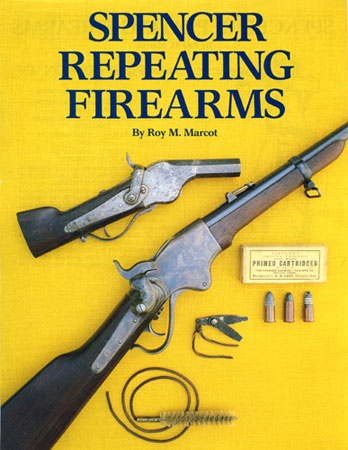 Spencer Repeating Firearms |
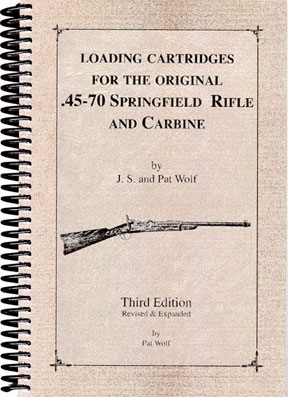 Loading Cartridges for the Original .45-70 Springfield Rifle and Carbine |
|
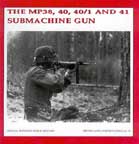 |
||
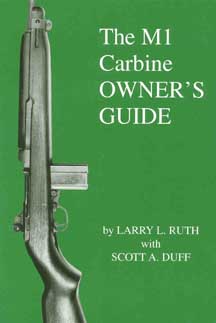 |
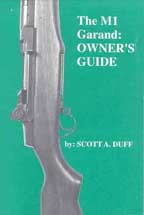 |
|
|
|
|
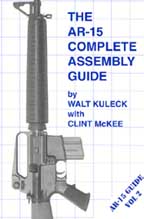
|
|
REMINGTON ROLLING BLOCK RIFLES, CARBINES & SHOTGUNS - SPORTING & TARGET RIFLES |
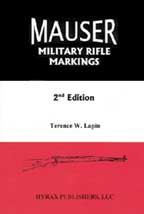
|
s 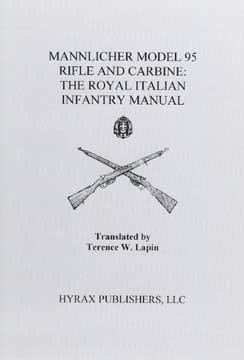
|
by Joe Poyer
A quick search of Ebay for anything related to sniper rifles—telescopic sights, mounts, manuals, cases, etc.—illustrates the collecting "frenzy" for sniper rifles, both old and new.
Weaver telescopic sights used on the World War II-era Model 1903A4 Sniper Rifles sell for $900 to $1,500 dollars, only most of those offered for sale are fakes or are misrepresented commercial sights. The "chat rooms" are full of misinformation because there is very little reference material available.
Collecting the American Sniper Rifle, 1900 to 1945 provides accurate information that will allow the collector to determine whether or not a particular rifle or telescopic part—or other accessory—is correct.
The book provides a detailed description of...
the sniper rifle with all parts and markings that make it uniquely a U.S. military sniper rifle.
the telescopic sight with all parts and markings that make it uniquely a U.S. military sniper scope.
the bases and mounts with all parts and markings that make them part of the U.S. military sniper scope assembly.
The books also contains a history of the development of each particular sniper rifle and telescopic sight. Its mounting on the rifle and sighting in are described in detail. A history of the development of the rifle leading to its use as a sniper rifle is included in an appendix, as are descriptions of British and Canadian sniper rifles that used American-produced telescopic sights.
This book covers the sniper variations of the Model 1903 Springfield:
Telescopic Sight:
This book does not contain sniping techniques or tactics. Those have been well-described in other books.
Collecting the American Sniper Rifle 1900 to 1945, by Joe Poyer $22.95 ![]()
by Joe Poyer
This volume in the “Collecting the American Sniper Rifle” series includes the M1C and M1D Garand Sniper Rifles, the Winchester and Remington match rifles used as sniper rifles in Vietnam, the USMC M40 Sniper Rifle, the US Army’s M24 and XM2010 Sniper Rifles, the Special Operations Command M86 and M89 Sniper Rifles, and the T3 and M2 Carbines equipped with the T120, M1, M2 and M3 Infrared Sniperscopes.
Each sniper rifle is analyzed in depth for serial number ranges, markings, parts codes and other identifying markings. The telescopic sights, mounts, and rings are specifically identified for their military use complete with markings and where useful, serial number ranges.
You find an M1C or M1D sniper rifle at a gun show or a gun shop? How do you know that it is an original and authentic U.S. military sniper rifle. These and other U.S. military sniper rifles have been counterfeited for several decades now. Others have been built by well-meaning shooters and collectors for their own use, but over the years, and in other hands, they have become “original and authentic” sniper rifles.
M1Cs fall into a distinct range of serial numbers and their telescopic sights and mountings possess distinct characteristics. Do you know what they are?
The M1D, the most popular U.S. military snipers rifle to collect, are widely faked. Do you know how to identify a correct M1D. Producing an M1D only requires a change to the barrel and a new handguard. The mount and bracket to the telescopic sights have been widely manufactured for more than thirty years as after-market replacements. Original M84 Telescopic Sights and their mounting are identified, photographed and compared to after-market reproductions.
Telescopic sights for the M1903A4, M1C, M1D and M40 sniper rifles are now being reproduced in China for sale in the United States. None of them say “Made in China.” Often they are sold on Ebay and other auction sites, either reworked to appear original, or without stating that they are reproductions. Do you know how to tell the difference?
There are a few original USMC M40 and the M24 Sniper Rifles that have been released for sale to police departments and to civilians. But the have also been reproduced by numerous gunsmiths and small companies for the past twenty or so years. Most of the shipping boxes made it plain that these were not the real thing, but once the box is lost, or the rifle on a table at a gun show, or listed on a gun auction site, how do you tell a reproduction from the original?
Collecting the American Sniper Rifle 1945-2000, like its predecessor, Collecting the American Sniper Rifle 1900 to 1945, provides detailed descriptions and tables of identifying characteristics. If you are interested in collecting American sniper rifles, these are the books you need. They may save you hundreds of dollars and a lot of grief.
by Joe Poyer
A new revised and expanded edition of the Model 1911 and Model 1911A1 Military and Commercial Pistols is now available. Sixteen pages of new information regarding models, stocks, mainspring housings, magazines, markings, serial numbers, and finishes to help identify your Model 1911 or Model 1911A1 more exactly.
Nearly five years in preparation, this books examines John Browning's most famous pistol from barrel bushing to hammer to lanyard loop on a part-by-part basis.
As always in the “For Collectors Only®” series any change or variation in a part is described by serial number range, making it possible to determine the authenticity of any Model 1911 or Model 1911A1 by year of manufacture.
The Model 1911 and Model 1911A1 Military and Commercial Pistols is now 560 pages long. It includes 82 tables detailing parts and markings and 672 photos and drawings. An eight page color insert includes rarely seen examples of the Model 1911 and Model 1911A1.
Parts are described in chapters organized by assembly—receiver, slide and magazine. Each part of each assembly—trigger system, magazine release, sights, etc are then described complete with markings and other identifying characteristics. Parts are differentiated by model and manufacturer, i.e. Colt, Springfield Armory, Remington Arms-UMC, Singer, Ithaca , Remington Rand and Union Switch & Signal. All Colt model and variation parts are also described where they differ from the .45 ACP part.
All military and commercial markings are listed by date or serial number range of use. Serial numbers are listed in twenty-six individual tables both by military and the individual commercial models, and by other manufacturers. An appendix contains a serial number listing organized both by manufacturing and shipping date. Serial numbers for British military, Canadian, Argentine, Norwegian, and Russian military pistols are also given.
Individual chapters and appendices provide detailed examinations of markings on receivers, slides and barrels, including military inspection and commercial markings, and photographs of all slide markings. Finishes are discussed for both military and commercial pistols by serial number ranges. Accoutrements and accessories are thoroughly explored and photographed including all belts, magazine pockets, and holsters .
A complete listing of all U.S. military Model 1912, 1916, M3, M7, and M15 holster manufacturers is included. U.S. military-issue ammunition in .45 ACP is described in detail. A photo-illustrated assembly/disassembly procedure shows the most efficient way to service the pistol.
Our technical adviser, Karl Karash, has produced a portfolio of over 5,000 color photographs of Model 1911/1911A1 pistols, both military and commercial (see examples below). This collection is an invaluable tool for researching the M1911/M1911A1 pistol. A total of 205 pistols were photographed to show full size and in color, right and left views of each pistol from serial no. 43 to the end of U.S. military and commercial production, plus close-ups of all significant parts and markings (over 5,000 photographs in all). Each photograph can be enlarged 4 times on your computer screen without losing resolution.
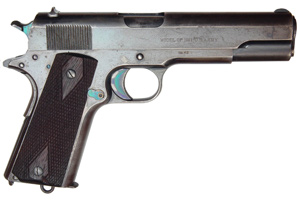
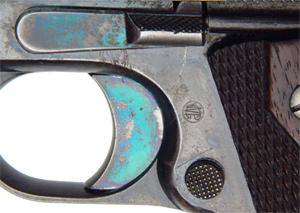
The CD operates on the Windows system only. The price is $19.95 plus postage.
Or purchase both the book and the CD together for $45.95 plus postage.
Book Only - The Model 1911 and Model 1911A1 Military and Commercial Pistols, 3rd Edition, by Joe Poyer $35.95 ![]()
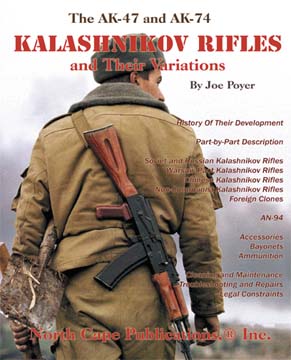
by Joe Poyer
(ISBN 1-882391-33-0)
This book contains the most complete and up-to-date examination of the famed Kalashnikov rifle yet that every shooter and collector needs. The book provides a part-by-part examination of the AK-47 and AK-74 rifles and describes in detail all the major variations between the 7.62 x 39 mm AK-47 and ARM. Also the 5.45 x 39 mm AK-74, AK-74M and AKS-74U, and the new Century series AK-101 THRU AK-108 rifles and submachine guns now being produced in the Russian Federation.
Also described in detail are all the national variations of the Kalashnikov rifles, including the Bulgarian, Chinese, Egyptian, East German, Hungarian, Iraqi, North Korean, Polish, Romanian, and Yugoslavian manufactured Kalashnikov rifles in both 7.62 and 5.45 caliber. A separate chapter describes all clones of the Kalashnikov system from the Belgian FNC through the Israeli Galil to the Swiss STg.90 series.
Other chapters include: 1)a complete history of the rifle's development, 2)a short biography of Mikhail Kalashnikov, 3)descriptions and use of purpose-built telescopic sights for the Kalashnikov rifles, 4)accessories and tools issued to the soldier, 5)ammunition carriers from vests to pouches, and 5)various types of Soviet and Russian ammunition. Also described are the Soviet and other 6)national sniper rifles and 7)the new Russian An-94, the replacement for the AK-74.
Appendices contain information on how to identify models and national origins of entire rifles, as well as parts, by markings and finishes, serial numbers, assembly/disassembly, cleaning and maintenance, operation, troubleshooting, accessories, parts suppliers, and the legal considerations of owning or assembling an "assult weapon" under the various federal laws - its easier than you might think.
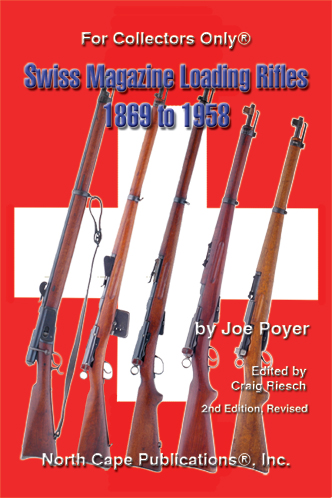
by Joe Poyer
Vetterli and Schmidt-Rubin Rifles and Carbines
In 1869, the Swiss government adopted the world's first successful magazine loading rifle for their army. In the latter half of the 19th Century, Prussia was the military power to be feared and the Swiss, living right next door, were determined to guarantee the integrity of their borders.
The Vetterli rifle was a clever Swiss design that combined the spring-loaded magazine tube and cartridge elevator of the Winchester Model 1866 and the bolt action of the Dreyse needle-fire rifle. It provided the Swiss infantryman with eleven shots as fast as he could work the bolt.
By the end of the 1880s, the Vetterli had been made obsolete by the march of technology. A new rifle design using a straight pull system was developed. The Model 1889 underwent major redesigns ending in the K-31, one of the finest, most accurate bolt action infantry rifles ever developed. The promise of the magazine loading rifle was fulfilled: the Swiss were able to avoid invasion and involvement in two world wars and one cold one.
Swiss Magazine Loading Rifles, 1869 to 1958 by Joe Poyer is the newest book in the "For Collectors Only" series. It describes, on a part-by-part basis, all the models of both the Vetterli and Schmidt-Rubin rifles including infantry rifles, short (Stutzer) rifles, carbines and cadet models. All markings and codes are explained and tied to models and serial number ranges. Also included are exploded views, ammunition details, assemble/disassembly instructions, maintenance and trouble shooting.
The Swiss rifles are not only extremely accurate and a great deal of fun to shoot, but their wide range of variations makes them a great collectible.
Swiss Magazine Loading Rifles 1869 to 1958 2nd Edition, Revised by Joe Poyer $22.95 ![]()
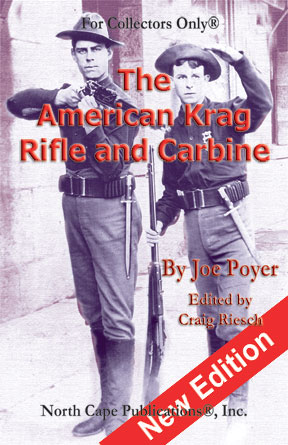
by Joe Poyer, edited by Craig Riesch
The Krag rifle and carbine were the first smokeless powder, magazine loading arms used by the United States Army. It was adopted from a Norwegian design in 1892 and reached the troops starting in mid-1894.
The Krag was the first precision-machined, small caliber, magazine loading rifle adopted by the U.S. Army. This meant that the production facilities and work force had to be completely rebuilt and reorganized. In just four short years, the entire U.S. Army, both mounted and dismounted branches, were completely equipped with the new rifle and carbine. So successful had been the design and initial production phase, that only minor changes were made to the rifle and carbine afterward.
It was the ideal time to introduce a new rifle. The U.S. Army in the 1890s was a peacetime organization. The frontier had been settled in the late 1880s and the Army had been reduced in strength to not quite 18,000 strong, and was scattered halfway around the world from Plattsburgh, New York to Anchorage, Alaska to Honolulu, Hawaii. All but two troops of cavalry were still stationed west of the Mississippi River and no military formations in regimental strength had been assembled since the Sioux Wars in 1876-1877.
But the combination of Spanish imperialism in Cuba and the sinking of the battleship, USS Maine, led the United States into a short, sharp war in 1898 that gave way to a longer, more bitter fight in the Philippines. In 1900, Chinese revolutionaries styled the "Boxers" threatened to murder all foreigners in China. The U.S. Army and Marines brought their Krag rifles to mainland China in concert with forces from other European nations and quickly relieved the siege of the Foreign Legations at Peking and then helped clear the country of insurgents.
Even though the Krag only served the U.S. Army for eleven years, it did so admirably and saw much hard fighting. It only gave way to the Model 1903 Springfield as the latter rifle could be loaded quickly and easily with a five round clip.
The American Krag Rifle and Carbine provides the arms collector, historian and target shooter with a part-by-part analysis of what has been called the "rifle with the smoothest bolt action ever designed." Each of the fifteen models of the American Krag rifle and carbine are described in detail. All changes to all parts are described and matched to serial number ranges. A monthly serial number chart by production year has been devised that will provide the collector with the year and month in which his rifle or carbine was manufactured.
The mystery of the so-called Philippine Constabulary rifles is solved and the "School" rifle is introduced. A new and complete exploded view is included as are instructions for assembly and disassembly of the rifle and carbine.
The American Krag Rifle and Carbine, 3rd Edition by Joe Poyer - Edited by Craig Riesch $22.95 ![]()
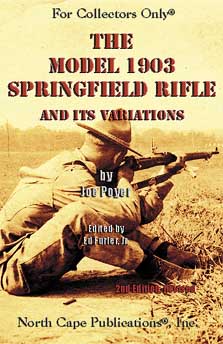
"4th Edition, Revised and Expanded" ![]()
by Joe Poyer Edited by Ed Furler, Jr.
The Model 1903 Springfield Rifle was perhaps the most famous and popular of all U.S. military rifles. First issued in 1903, it served in two world wars and the Korean War and numerous smaller military actions around the globe between in the first half of the 20th Century. It even saw limited service during the War in Vietnam. Today, it is an extremely popular and sought-after military rifle by collectors. A modification of the famous Mauser bolt action, The Model 1903 Springfield was legendary for its accuracy in the hands of a well-trained rifleman. A variation of the rifle developed especially for match shooting held the crown in the National Matches longer than any other rifle. The National Matches have been conducted annually on a nationwide basis since 1873 except in wartime and involved both civilian and military shooters competing on an equal basis. The matches exerted a great deal of influence on the design of American military rifles and marksmanship training.
"The Model 1903 Springfield Rifle and its Variations" provides a detailed examination of this famous military rifle on a part-by-part basis. Every variation in every part is documented and matched to the serial number range of its use. Thirty-one different variations of the rifle were developed over the 41 year course of its production and all are described and identified.
Twelve different variations of the rifles were developed as sniper rifles beginning in 1907. All are discussed and described as are the telescopic sights used on each. The rifle was produced for civilian shooters by the Springfield National Armory as well. Several variations of .30 caliber rifles were developed and sold through the Director, Civilian Marksmanship Program and the National Rifle Association for target shooting and hunting. A range of .22 caliber rimfire rifles was also developed for both low cost military and civilian marksmanship training in the 1920s and 1930s.
During World War II, to meet the needs of a 12 million man military force, the Remington Arms Company and the Smith Corona Typewriter Company produced more than 1.8 million Model 1903A3 rifles including the Remington-manufactured Model 1903A4 sniper rifle.
Appendices provide additional information on serial numbers, production numbers, ammunition, inspection procedures and markings, lists of military and civilian inspectors and their markings, the National Match rifle and the rare and highly classified Pedersen device that converted this bolt action rifle to a semiautomatic rifle during World War I with never-before published original factory photos. A thorough bibliography completes the text.
"The Model 1903 Springfield Rifle and its Variations" is 456 pages long with six color plates and hundreds of black and white drawings and photos. Format is perfect bound, 8.5 x 5.5 inches. Every part is illustrated in detail either in a drawing or photo. As the book covers the entire range of the Model 1903 rifle from the rod bayonet to the M1903A4 sniper rifle. The retail price is $24.95 and as such, the book is a viable alternative to the $50 and $80 dollar books presently available on the Springfield.
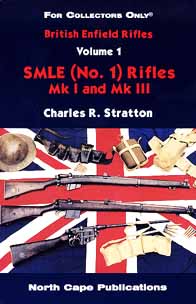
by Charles R. Stratton
The British Enfield No.1 Rifle (Mk I through lshapore 2A/2A1) is not only one of the world's finest battle rifles, but also one of the longest serving from Africa's colonial wars through World Wars I and II and Korea to the conflicts of the Middle East. The British Tommy and the troops of the former British Commonwealth counted on their Short Magazine Lee-Enfields for nearly 90 years, and many are still in use today. Skip Stratton, who maintains the Enfield Rifle Research Internet web site and is a collector of long standing, has written a superb book that provides a well-organized, detailed look from the collector's perspective at this fine rifle series.
Dozens of charts and illustrations take you through seven manufacturers on three continents and seventy years of production to identify each variation of every single part of the rifle. Stratton shows you how to determine which parts are correct for each manufacturer and each period of manufacture. Is that Lee-Enfield pre-World War I, World War I, World War II, or post-World War II manufacture? British or Commonwealth? Original or arsenal reconditioned? It takes more than the date on the action body to determine that. And what do all of those codes and inspection marks and cyphers mean? Do they help detemine the age of the rifle and its parts? Yes, they do, and all are listed in the books' 158 pages and shown in more than 90 illustrations and photographs. Also included are descriptions of accoutrements, cleaning tools, and bayonets issued to the British and Commonwealth soldier with his Short Magazine Lee-Enfield. Serial numbers, codes, markings, cyphers - this book has it all in an easy-to-use layout.
British Enfield Rifles, SMLE(Vol 1) MK I & MIII $19.95 ![]()
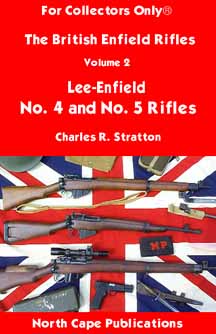 British Enfield Rifles Volume 2, No. 4 and No. 5 Rifles, 3rd Edition Revised
British Enfield Rifles Volume 2, No. 4 and No. 5 Rifles, 3rd Edition Revised by Charles R. Stratton
Charles (Skip) Stratton, has done an outstanding job- again. He presents the No. 4 and No. 5 rifle part-by-part. Every single model, including the sniper rifles, target and match rifles and training rifles, manufactured in the U.K., Canada, the U.S., Republic of South Africa and Pakistan, is thoroughly described.
He begins by presenting the historical background for the development of both rifles, the No. 4 in the dark, early days of World War II and the No. 5 (better known as the Jungle Carbine) prompted by the ferocious fighting in Malaya and Burma. He describes each variation of both rifles and explains what all the "marks," "numbers," and codes found on most parts mean and shows how to relate them to the various manufacturing factories in England, Canada, the United States, South Africa and Pakistan. He also provides a breakdown of serial numbers by year, factory and country.
Stratton then literally dissects both rifles, describing every single part and explaining the reasons behind any changes and points out how to identify those changes.
For instance, there are eight different receivers - action bodies- used on the eleven variations of both rifles, five variations of breech bolts, nine variations of rear sights, thirteen variations of barrels and two variations of stocks. Stratton also discusses every single part of the rifle in the same detail so that the reader and collector knows that there are three variations of the humble stock bolt, seven variations of the forend, three variations of the buttplate, and so on, as well as how to identify each and relate it to a specific range of serial numbers produced by a specific factory.
The book also translates the codes and markings that often pinpoint its original and subsequent military units. Collectors are thrilled when the discover that their rifle served at El Alamein or during the Invasion of Sicily, at Monte Cassino, Normandy or in the Far East in Malaya, or in Korea or Aden or anywhere else British forces were to be found between 1941 and the mid-1950s.
As with his first volume covering the Mk I and Mk III (No. 1) Rifles, this is a thorough and well-organized book that will aid the collector in determining originality and restoring these historical battle rifles to authenticity.
British Enfield Rifles, (Vol 2) No. 4 and No. 5 Rifles, 3rd Edition revised $19.95 ![]()
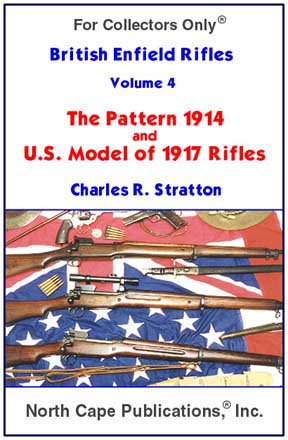 NEW! British Enfield Rifles, Volume 4, The Pattern 1914 and U.S. Model of 1917 Rifles
NEW! British Enfield Rifles, Volume 4, The Pattern 1914 and U.S. Model of 1917 Rifles by Charles R. Stratton
Charles R. Stratton continues his very successful series on collectible British military rifles with the little understood, but widely available Pattern 1914 and U.S. Model of 1917 Rifles.
Often called the "American Enfield," the Pattern 1914 in .303 caliber was the only British military rifle ever built wholly in the United States even though it was designed by the engineers at Enfield Arsenal. The U.S. Model 1917 was the same rifle, but rechambered for the American .30-06 cartridge. Over 1.2 million Pattern 1914 rifles and 2.5 million Model 1917 rifles were built during World War I by three American companies, Winchester, Remington and Eddystone. More American soldiers, including Sergeant Alvin York, were armed with the Model 1917 Enfield than with the Model 1903 Springfield.
The Model 1917 Enfield has long been a favorite American collectible. Over the years, it has been sporterized for hunting and restored for collecting by thousands of shooters. Parts are commonly available and many P-14 parts are interchangeable with M1917 parts, making it quite easy to return a given rifle to original condition.
As in the previous two volumes, Mr. Stratton has provided a detailed description of each rifle on a part by part basis and noted whether or not the particular part is interchangeable between the two models. He provides a series of charts and explanations for the markings, codes and inspection stamps that appear on each part and tells how to determine which were originally manufactured for the P-14 or the M1917. He also provides a complete history of the rifle's development and use in both World War I and World War II. Also a complete description of the two sniper rifle variations of the P-14 that were fielded in both wars, the Pedersen device developed for the M1917, and the accessories that were issued with the rifle to soldiers of both countries, including ammunition belts, bayonets, tools and cleaning equipment. Separate appendixes provide an exploded view and nomenclature, production statistics, ammunition descriptions and sporting rifle derivations.
The demand for this book has been so great that the author and publisher decided to skip over Volume 3 in the series which will deal with the original "Long Lee" rifle for the time being. Volume 4, The Pattern 1914 and U.S. Model of 1917 Rifles is being published out of sequenc to meet this demand. ISBN 1-882391-29-2, 5.5 x 8.5 inches, perfect bound.
British Enfield Rifles, (Vol 4) The Pattern 1914 and U.S. Model 1917 Rifles by Charles R. Stratton $16.95 ![]()
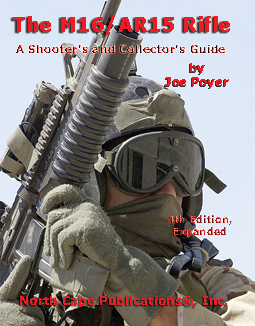
by Joe Poyer.
The M16 has been the nation's military rifle since 1964, longer than any other military rifle. During those 36 years, it has been carried in combat and on peacekeeping missions by American, allied and friendly soldiers to every corner of the world.Over thirty new pages added to this edition with up-to date information on the latest military developments in the M4, M16A3 and -A4, and M25 models, designated markman’s rifles, .22 caliber tactical rifles, and all new calibers in which the AR15s are chambered.)
The civilian version, the AR15 rifle, has been manufactured in the hundreds of thousands by more than a dozen different companies. It is the current National Match Service Rifle and the most popular target match rifle in use today.
The M16/AR15 Rifles by Joe Poyer provides a detailed examination of this famous rifle in both its military and civilian versions. Following a history of its development and the evolution of military tactics that guided its design, a comprehensive part-by-part examination of the rifle is provided.
Markings and codes for military and civilian rifles and carbines are deciphered and a six page table lists all models by all manufacturers currently in production, with specific features.
For those interested in competition, three AR15s were custom-built; a spacegun for long range bench rest matches, a service match rifle that complies with all current OCM and NRA competition rules and a .22 rimfire AR15 rifle that is not only amazingly accurate but is legal in California and other states that ban large capacity magazine, centerfire, semiautomatic rifles. The design and building process is thoroughly described for those wishing to build their own match rifles.
The M16/AR15 rifle is the last military rifle that Americans will be allowed to own. The M16's replacement, which incorporates a 20 mm grenade launcher, is already well-advanced in testing and is due to be introduced by mid-decade. But the AR15 rifle will remain the national match service rifle far into the foreseeable future.
The book is illustrated with over three hundred photos and drawings, is 8 x 10.5 inches in size, perfect bound and 134 pages in length.
M16/AR15 Rifle, A Shooter's and Collector's Guide, 4th Edition, Expanded, by Joe Poyer. $22.95 ![]()
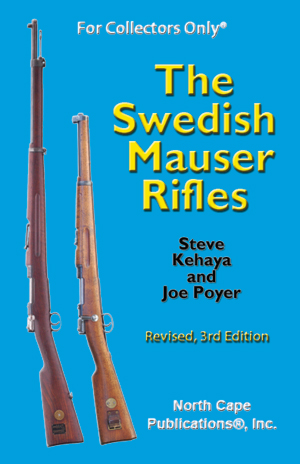 The Swedish Mauser Rifles, "3rd Revised Edition"
The Swedish Mauser Rifles, "3rd Revised Edition" by Steve Kehaya and Joe Poyer
The writing team that brought you "The SKS Carbine" has done it again with the "Swedish Mauser Rifles." One the earliest military surplus imports into North America after World War II, more than 300,000 of these beautiful rifles are now in private American and Canadian hands and another 75,000+ in European gun racks. Yet, only two books have been written about this finest of all Mauser rifles, one in German and the other directed more toward shooters than collectors.
"The Swedish Mauser Rifles" provides the “Fore Collector’s Only” part-by-part examination for every one of the14 different models of this fine military and civilian match rifle. Every marking, every code is explained. A new, first ever list of serial number ranges by year has been compiled. All military and many civilian accessories are included with photos. Line drawings illustrate every part to provide the clearest view. A new color insert provides photos of the various models.
Also included is a discussion of production methods and total rifles produced for each model. Serial numbering is clarified between carbines and rifles (many share the same serial number). Each model is discussed in detail and illustrated with photos.
The target versions of this very fine rifle are analyzed and photographed. A complete discussion of the various sniper rifle models are included (with photos) up to the present PS90 based on the AWS Sniper Rifle. Ammunition types are listed and performance data is included. Appendices discuss production methods and totals produced; the obscure m/39 and /40 rifles, the development of the Swedish arms industry to the present, a short military history of Sweden, the composition of Swedish steel - which did not change from 1894 to the end of production in 1944 - and assembly/disassembly and trouble-shooting. We think this book will be a major contribution to the field of arms collecting.
"The Swedish Mauser Rifles" contains 263 pages packed with information and illustrations and photos. Perfect bound with four-color cover.
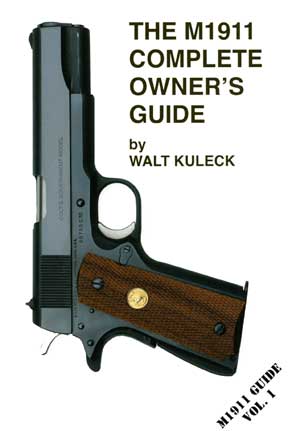 The M1911 Complete Owners Guide, Volume 1,"
The M1911 Complete Owners Guide, Volume 1,"by Walt Kuleck
Walt Kuleck has done it again. His “Complete Owner’s Guides” (M1 Garand, M1 Carbine, M14 and AR15) are the last word on the care and preservation of collectible firearms. His new book for the Model 1911 covers every aspect of caring for the Model 1911 and Model — and all the information applies to every other Model 1911style pistol by Colt or any other manufacturer — from problems with safeties to failures to feed to broken grip screw bushings. Virtually every problem that can occur with the Model 1911type pistol is covered and Walt offers immediate fixes that most everyone can handle. He also provides tips on such problems as a small but growing crack in the receiver that does not yet interfere with the function or safety of the pistol: solution, in most cases it can be fixed by drilling a tiny hole at the end of the crack to prevent it growing further. He discusses magazines and how to determine a good one from a bad one before purchasing; how to deal with springs that have lost their tension, how to select a slide stop that fits the shooter’s hand, and a hundred an one more problems. Additional chapters include “Magazine, Up Grade, Holsters, Ammunition, and Shooting (including a section entitled “How to Win A Gunfight”). A highly recommended text for the shooter and collector.
*The M1911 Complete Owners Guide, Volume 1, by Walt Kuleck $29.95 Order by email to ncape@ix.netcom.com or by calling 800 745-9714.
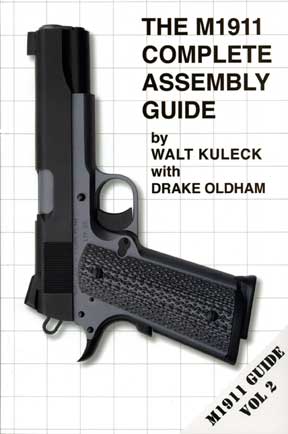 The M1911 Complete Assembly Guide, Volume 2,"
The M1911 Complete Assembly Guide, Volume 2,"by Walt Kuleck and Drake Oldham
Everyone knows how to disassemble and reassemble a Model 1911type pistol. Or think they do. When I had my own gun store some years back, I lost track of the number of John Browning’s pistols that were brought to me in a box to put back together. And even those who may know how, seldom do it properly and the result is a collection of illfitting parts that wear faster than they should and malfunction far to often. The M1911 Complete Assembly Guide not only teaches the correct way to disassemble and reassemble any Model 1911, but how to improve the old warhorse.
Thinking of repairing Grandad’s World War II Remington Rand or “customizing” your Colt Series 80? Or perhaps you have a new pistol from one of the dozens of manufacturers now producing variations of the Model 1911. Or perhaps you are thinking of building one from scratch. If so, then Walt Kuleck and Drake Oldham, who between them have more than fifty years experience with building and caring for Model 1911type pistols for civilians and police forces, take you through the process stepbystep. Like The M1911 Complete Owner’s Guide, Volume 1, Volume 2 should be on the bookshelf of every professed Model 1911 collector and shooter.
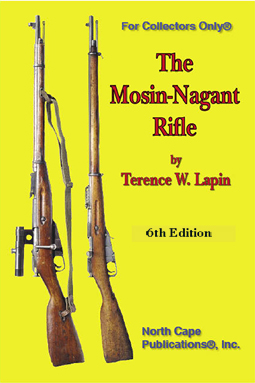
by Terence W. Lapin
Although the Mosin-Nagant rifle was in use for more than sixty years by half the world's military forces, no book in the English language has ever traced its development and identified all its models and variations as manufactured around the world, including in the United States. No provided the part-by-part information needed by the collector and shooter.
This is the first book in English, ever written about the Mosin-Nagant. It identifies every single model manufactured in Russia, France, the United States, Poland, Romania, Hungary, Finland, China and North Korea. Every part is described with all changes and markings, making it possible to identify the national origins of not only the rifle as a whole, but of every part.
Chapters provide a history of its development and use from 1892 to its last manufacture in Hungary and China in the mid-1950s. Then each part is analyzed showing all changes in chronological order. All variations are described from the original rifle to the M1944 carbine with its unique folding bayonet. All Finnish variations are described and a history of the tiny country's relations with its giant next door neighbor is included to show the derivation of Finland's line of Mosin-Nagants.
Sniper rifles from all countries are listed in a separate chapter as is the ammunition produced for the rifle and all accessories issued to the combat soldier. Of great value to the collector is the huge list of markings and codes found on all Mosin-Nagant rifles of whatever national origin, the first ever compiled.
The Mosin-Nagant was one of the earliest small-caliber battle rifles developed in the late 19th century. Its rugged design and construction are borne out by the fact that the only changes ever made to its basic design were to shorten and lighten the rifle as ammunition improved and battle conditions changed. The Mosin-Nagant is without doubt, one of the premier battles rifles of the late 19th and early 20th century and a testament to skill of it Russian designer.
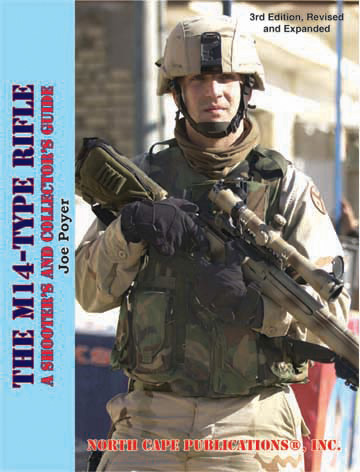 The M14-Type Rifles, A Shooter's and Collector's Guide, 3rd Edition
The M14-Type Rifles, A Shooter's and Collector's Guide, 3rd EditionThe M14-Type Rifle, 3rd edition, revised and expanded, by Joe Poyer ($19.95). The M14 rifle was the last semiautomatic battle rifle adopted by the U.S. military. It lasted less than ten years before being replaced by the M16. But in that short time, it developed fierce adherents and became one of the finest match rifles in the world. During the war in Iraq, the M14, as well as its sniper variations, the M21 and M25, have made an astonishing comeback. This new, revised and expanded 3rd edition describes the use of the M14 rifle and its sniper variations today by all four branches of the U.S. military, plus the U.S. Coast Guard.
The M14-Type Rifle provides a detailed history of the rifle's development and use, particularly today in Iraq and Afghanistan where the high-powered 7.62 x 51 NATO (.308) cartridge is ideal for long range sniping and for penetrating body armor and light vehicles. The M14 rifle and its two sniper variations, the M21 and M25, are described on a part-by-part basis. A survey of all current civilian semiautomatic M14-type rifles and components available today is also included as a separate chapter and brought up to date. Included also are the Chinese variations of the M14. The history of the development and use of the M14 in Vietnam is discussed showing how it led to the development of the sniper variations.
The book also serves as a guide for shooters who want to restore an M14 to original condition or build a superb match rifle from the civilian versions. Various receivers and parts kits are discussed. Separate chapters show how to turn a commercial M14-type rifle such as the M1A, into a superb match rifle by choosing the right barrel, glass-bedding the stock, and unitizing the gas cylinder. Also discussed are National Match rifles with specifications, ammunition to be used for the best accuracy, targeting and shooting the M14-type rifle and trouble shooting and maintenance. Finally, all G.I. issue accessories are described. The book is fully illustrated with photos and drawings that clarify the text. Appendices provide up-to-date information on parts and supplies and gun smithing services. Finally, the current legal ramifications of owning a semiautomatic rifle is explained.

by Craig Riesch.
The 7th edition of the best selling "bible" of the World War II M1 Carbine has been updated with new information from the previous edition. The changes between the 6th and 5th editions are listed on the last page of the book.
The author, Craig Riesch, has compiled twenty-two years of surveys and research into this 237 page volume containing 38 charts, 212 photographs, and fourteen drawings. The book provides a history of the M1 Carbine's development, manufacture and use during World War II, as well as through the Korean War and the war in Vietnam.
The M1 Carbine is analyzed and described by its ten separate manufacturers and various models, with all changes, modifications, and new parts noted by serial number range of use. And since the U.S. Army Ordnance Department required that virtually every part of the M1 Carbine be marked with a manufacturer's or subcontractor's code, Riesch has unraveled the manufacturer's and subcontractor's codes---again by serial number range --- and eliminated many "spurious codes" and myths. Every major and most minor parts are now conclusively identified by manufacturer and serial number range, making it possible for the collector, shooter, and historian to examine an M1 Carbine to determine its authenticity with a high degree of confidence.
Using the charts and photos in the book, the collector can identify the manufacturer and period of use for the receiver group, barrel group, trigger housing group, and stock group and their component parts. Butt plates by the various manufacturers are shown in full-size photographs for easy identification.
All variations of the M1 Carbine are discussed -- M1, M1A1, and M2 -- by manufacturer. The aspects that make up the two types of true M1A1 folding stock paratrooper carbines are described and photographed. Serial number ranges for original manufacture are included. Reproduction folding stocks are shown and points of difference are identified.
The book is divided into six chapters and ten appendices. Each chapter describes a major subgroup of the M1 Carbine: receiver, barrel, trigger assembly, and stock. Chapter six covers the M1 Carbine accessories issued to the soldier, and chapter seven the M3 trench knife and M4 bayonet, and their scabbards. The appendices include serial number sequences for each manufacturer, a description of the types of ammunition for the M1 Carbine, a discussion of "imported" carbines, an exploded view, and an M1 Carbine survey form on which the collector can list all parts of his or her carbine to determine authenticity. Complete instructions for disassembling the carbine are included with photographs.
To see a short video of how the M1 Carbine: Wartime Production book helps you to identify or restore an original M1 Carbine, Click Here.
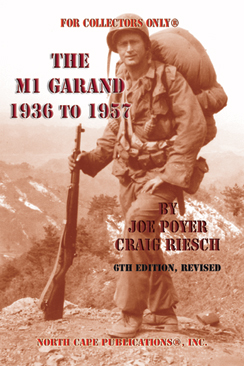
by Joe Poyer and Craig Riesch.
The most famous of all American battle rifles, the Ml Garand is described on a part-by-part basis, by serial number range and manufacturer. From the gas trap rifles through the MIC, MID and MC 1952 Sniper, National Match, Navy 7.62 x 51 mm NATO, British, Danish, and all lend lease rifles, the text and illustrations have been up dated and new information added.
This new 6th edition has been revised and expanded to include the very latest information developed by the North Cape Publications, Inc. research team to describe the "greatest battle implement ever" (General George Patton). It encompasses the entire range of Ml Garand production in text and quick-scan charts, and includes dimensions, markings, finishes and changes by serial number range for all parts in the manner our readers have come to expect from us.
Using this book, any Ml Garand can be analyzed in minutes to determine if it is "as manufactured" or to replace parts or rebuild the rifle to return it to its original condition and increase its collector's value. Every part by each of the four manufacturers---pre-World War II, World War II and post-War Il---is analyzed and described. The book also provides the most complete analysis yet of the World War II Ml Garand as well as an expanded chapter on the MIC, MID and MC 1952 sniper rifles. Included is a thorough discussion of their telescopic sights and mounts to pinpoint which one is correct for a particular period.
The U.S. Navy's 7.62 x 51mm NATO rifles, all British, Danish, and other Lend-Lease Ml Garands are also described. A classification structure for National Match Rifles has been devised which permits the collector to first determine whether or not a particular Ml Garand is a National Match rifle, and then to determine when it was assembled.
We have also included the War Department's World War II list of subcontractors and the markings. This will aid in identifying correct World War II parts.
Finally a new section, "Changes and Additions From the Previous Edition" has been added to the book. All are listed by page number for quick reference.
All North Cape Publications, Inc. books are updated with the latest new information in every subsequent edition.
M1 Garand 1936 to 1957, 6th Edition, Revised and Expanded $22.95 ![]()

by Steve Kehaya and Joe Poyer.
A complete analysis of the Communist Bloc's SKS Carbine -the first detailed study of this fine, collectible carbine in twenty-five years. Every part analyzed to tell you how to determine its country of origin and whether or not those parts are compatible between SKS carbines of different Nation's manufacture.
This famed Soviet-designed shoulder arm, which together with the AK-47, armed hundreds of thousands of "National Liberation Front" fighters from Vietnam to Angola. It was manufactured in six countries and its total production ran into the tens of millions. Since 1986, over 1,000,000 of those Albanian, Russian, East German, Chinese, North Vietnamese, North Korean, Romanian and Yugoslav SKS Carbines were imported into the United States. That vast number not only provides a fertile field for collectors, but helps keep prices low enough to make the SKS carbine a fine plinking and hunting rifle.
The SKS Carbine examines the firearm on a part-by-part basis so that you can determine 1) which parts are original on a particular SKS carbine, 2) in which country they were produced, 3) which of those parts are interchangeable between different manufacturers and which are not, 4) how to read serial numbers to determine date of manufacture and country of origin, and 5) what the inspection markings stamped on metal and wood parts mean. Since the vast majority of SKS Carbines in the U.S. are military surplus, you will learn how to examine and select a fine, shootable SKS Carbine. You are also provided with complete assembly/disassembly instructions, how to manufacture most parts if you cannot find a commercial source, and ammunition characteristics, and ballistic information.
An expanded list of factory codes for the Chinese SKS carbines has been made available to the authors by collector Howard Bearse. That information and more has also been included in this 5th revised and expanded edition of The SKS Carbine.
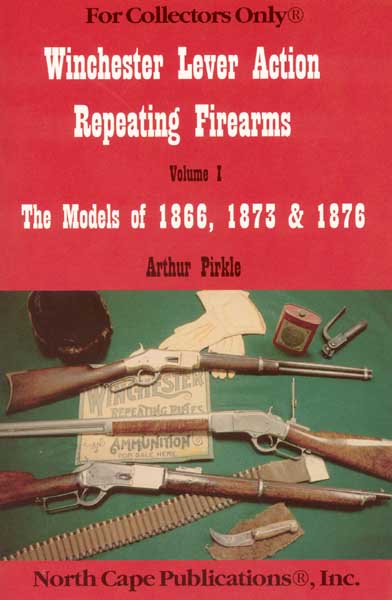
The first new book on these earliest Winchesters in twenty-five years, and the first to provide a complete, part-by-part description including dimensions, finishes, markings and variations. The venerable, and very collectable "Yellow Boy," the "Gun the Won the West" and the scarce Model 1876 are completely analyzed and described in text and charts. All serial number lists have been revised and are included, courtesy of U.S. Repeating Arms Company.
Winchester Lever Action Repeating Firearms: Vol 1, The Models of 1866, 1873 & 1876 $22.95 ea. ![]()
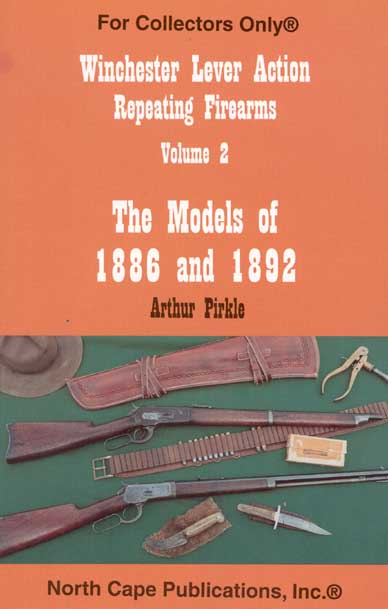
by Arthur Pirkle,
Continuing his outstanding study of the Winchester lever actions, the first in twenty years Mr. Pirkle provides a part-by-part by serial number range description of these wonderful rifles. He sets new standards with every book.
The second in this study of Winchester lever action repeaters, the first in twenty five years, covers the extremely popular John M. Browning-designed Models of 1886 and 1892. These are currently the hottest collectible Winchesters because of their affordability. As in Vol. 1, Pirkle describes each model on a part-by-part basis by serial number range complete with all finishes, markings and changes to each and every part. He also provides detailed appendices to assist the collector.
Winchester Lever Action Repeating Firearms: Vol 2, The Models of 1886 & 1892 $22.95![]()
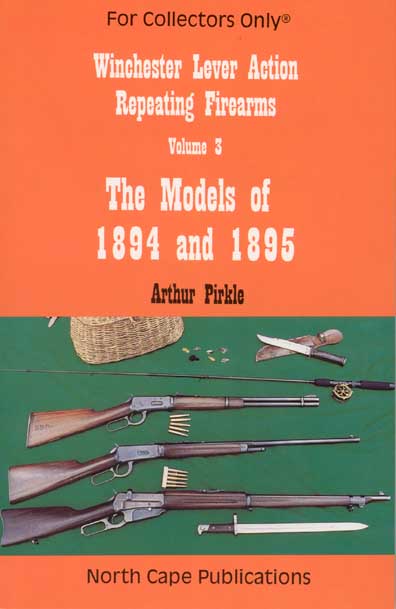
by Arthur Pirkle.
This is the third volume in Arthur Pirkle's major new study of the Winchester Lever Action Repeating Rifles, the first in more than 25 years. As in the two previous volumes, the Models of 1894 and 1895 are examined and described on a part-by-part by serial number basis. All dimensions, markings, finishes and any changes to a part are listed complete with its serial number range of use. The Model 1894 has 66 parts, the Model 1895, 62. With very few exceptions, each part was changed at least once during its manufacturing life, and sometimes, more often. These changes make it easy to determine the authenticity of a Winchester Lever Action Rifle. Parts are described so thoroughly that you will be able to differentiate between "Winchester-manufactured," after-market or reproduction parts.
Winchester Lever Action Repeating Rifles, Vol. 3, The Models of 1894 and 1895 provides a complete and detailed description of every one of these changes. Experienced collectors know that the value of the firearms in their collection depends in large part on their authenticity. Know that your Winchester lever action repeating rifle is correct; if it isn't, let Arthur Pirkle show you how to replace incorrect, or worse, reproduction parts.
Winchester Lever Action Repeating Firearms: Vol 3, The models of 1894 & 1895 $22.95 ![]()
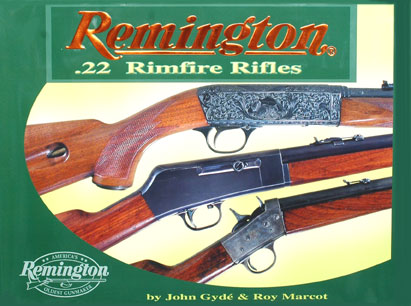
Remington .22 Rimfire Rifles
by John Gydé and Roy Marcot
Remington .22 Rimfire Rifles is the first detailed study ever made of the .22 caliber rifles manufactured by the Remington Arms Company. The authors have researched every .22 model in depth, utilizing the archives of the Remington Arms Company in Ilion , New York , and by direct examination of thousands of Remington .22 rifles in the Remington Museum and in private collections throughout the United States to produce this 377 page book that measures 9.5 inches high by 12.5 inches long. This book is stunning in design and complete in detail with more than 1,200 full color photographs. It covers the development of each model from the very first .22 Cane Guns and Rolling Block Rifles to the current "nylon-stocked" .22s. The study includes inventor's prototypes and the company's experimental rifles, as well as the entire .22 caliber product line, both commercial and military. Each rifle is beautifully photographed in high resolution digital images which provide great detail.
Both authors are members of the Remington Society of America research team that has been searching, studying, and cataloging the Remington Company archives since 1992, a privilege granted to no one else. This has provided them with a unique view of the company's history and development, as well as actual details from company reports, minutes and correspondence regarding this unique 122 year old product line.
Remington .22 Rimfire Rifles $125 Order by email to ncape@ix.netcom.com or by calling 800 745-9714.
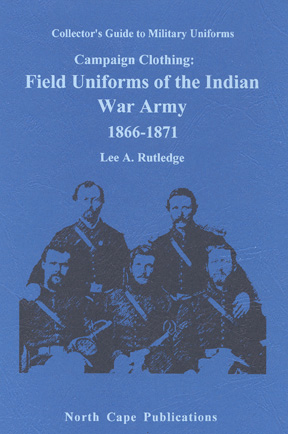
by Lee A. Rutledge
Mr Rutledge traces the development of the familiar Indian War period U.S. Army uniform from those worn during the Civil War through its evolution to meet the conditions encountered on the plains, deserts and in the mountains of the western United States in the immediate post-War period. Through the use of first-person accounts, General Service records and period photographs, Mr. Rutledge provides text and identification and charts a true picture and understanding of the inadequate uniforms worn by the underarmed garrisons west of the Mississippi.
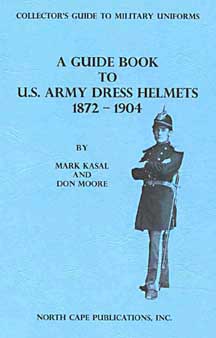 A Guide Book to U.S. Army Dress Helmets 1872 to1904
A Guide Book to U.S. Army Dress Helmets 1872 to1904Mark Kasal and Don Moore
In 1872, the Franco-Prussian War had recently ended leaving the new German nation the strongest military power on the continent. So impressed were the worlds military officials with the lightning-quick German military victory that almost overnight French influence on tactics and uniforms was replaced with a strong Germanic flavor.
The United States Army and its leaders were no exception. In the midst of developing and adopting a new uniform for officers and enlisted men, the Prussian influence was most evident in the new dress helmet issued in 1871. It had a high crown with a rudimentary front brim and a sloping rear brim that quickly earned the nickname, lobstertail. It was crowned with a spike for foot troops or a horsehair plume for mounted men. It looked so much like a German dress helmet of the time that the U.S. Army military attache to the American Embassy in Paris was booed on the streets by Parisians who thought he was a German officer.
The M1872 Dress Helmet has intrigued collectors and military historians ever since. It was one of the most colorful dress helmets ever worn by American Army troops. Cavalry plumes and cords were a lemon yellow color and the plumes dangled well below the rear brim. A plaited cord was attached to the helmet and looped around the shoulders and chest to keep the helmet from being lost when mounted on horseback or in a high wind. Artillery troops wore bright red cords and plumes or polished spikes and Signal Corps soldiers wore orange and white later, all black cords and plumes. Even the Corps of Indian Scouts had their own distinctive white and red cords and plumes.
In 1881, the height of the crown and the length of the rear brim were reduced to make the helmet more comfortable to wear. Other branches and units of the Army received permission to "customize" their helmets with their own distinctive insignia, expanding the variations available to the delight of collectors nearly a hundred years later.
The decorative helmets were worn by the U.S. Army including such notables as George Custer, John J. Pershing, Phil Sheridan, James W Forsyth, William T. Sherman, Alfred Terry, Ranald McKenzie, Nelson Miles and even Tom Mix til 1904 when they were replaced in that year by a flat, peaked cap and much of the pomp and color went out of the military.
A Guide Book to U.S. Army Dress Helmets 1872 to 1904" describes both the Model 1872 and Model 1881 dress helmets in exhaustive detail. Separate chapters describe reproduction helmets and helmet parts which have appeared over the past several decades and tells how to determine which parts are real and which are reproductions; also how to clean, restore and care for helmets and tips on finding collectable helmets and parts at shows and on the internet. Numerous photos of helmets and helmet parts are included as are eight full pages of color plates showing correct enlisted and officers helmets for study. Also included is an extensive gallery of period photographs showing the helmets as worn by troops of the time.
A Guide Book of U.S. Army Dress helmets 1872 to 1904 $16.95 ![]()
|
|

We have managed to obtain a very few copies of the original edition of Roy Marcot’s famous book on the Spencer repeating rifle and carbine published in 1983 and the most authoritative work on this famous Civil and Indian War firearm. These are new and in the original wrapping. They have been in storage for twenty years by a well-known Civil War carbine collector and expert. They have now been released for sale. These are the last known brand-new, unopened books from the original edition. They command prices in excess of $300 on the collector’s market.
Those of you familiar with the book know that it covers in detail the development and manufacture of all Spencer repeating rifles and carbines and their accessories from 1858 to 1868. Also included are Christopher Spencer’s other famous firearms inventions, the Roper Repeating Rifles and Shotguns and the Spencer Slide Action Shotgun. The descriptions and photographs are superb.
As noted above, we have a very limited number of these original, unopened books from the first edition. Each will include an autographed label by the author to apply to the book if you chose to open it.
 Loading Cartridges for the Original .45-70 Springfield Rifle and Carbine,
Loading Cartridges for the Original .45-70 Springfield Rifle and Carbine,by J.S. and Pat Wolf
This is a detailed and thorough book about shooting this fine old warrior with cartridges you make yourself from modern components, cartridges that will duplicate the Army’s 19th Century tack drivers. If you collect or shoot the .45-70 Springfield, this volume is a must.
This 3rd edition now also contains a chapter on loading the .45 Long Colt cartridge for you Cowboy shooting enthusiasts. The recipes, lists of bullets, primers, powders and cartridge cases are all based on firsthand experience for both the.45-70 Government and the .45 Long Colt cartridges. We’ve tried ‘em and they work. We were able to match the .45-70 Government reloads to the sights on our Model 1884 trapdoor. And our 7 1/2 inch Colt Peacemaker (1884 vintage) now shoots to point of aim at 50 yards, just as it was meant to do.
* Loading Cartridges for the Original .45-70 Springfield Rifle and Carbine, 3rd edition revised and expanded by J.S. and Pat Wolf
$29.95 Order by email to ncape@ix.netcom.com or by calling 800 745-9714.
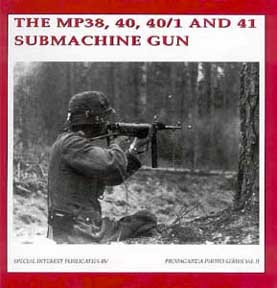 The MP38, 40, and 40/1 and 41 Submachine Gun
The MP38, 40, and 40/1 and 41 Submachine Gunby G. de Vries and B.J. Martens.
The MP38/40 sub machine gun was often mistakenly called the "Schmeisser" by G.I.s during World War II. In actual fact, it was a product of Heinrich Vollmer's genius and it was developed and produced by the Erma Company. Widely manufactured and issued on all fronts by German forces, it is almost as familar as the Mauser rifle. It was the first submachine gun with a folding butt stock and no wood at all. It ran through three variations, each improving the weapon and easing production requirements. The fourth, the Model 1941, combined the best attributes of hte MP28,II and the MP40.
This book is written by G.de Vries and B.J. Martens, who also wrote the "K98k Mauser." The book is also part of the Special Interest Publications series and like the K98k book, not only provides a complete history of the submachine gun's development and use, but specialized information concerning markings and identification points of special interest to the collector.
The book is heavily illustrated with original World War II photographs.
Harcover, 8.75 x 8.75 inches in size, 152 pages and over 200 photos.
The MP38, 40, and 40/1 and 41 Submachine Gun by G. de Vries and B.J. Martens $34.95 Order by email to ncape@ix.netcom.com or by calling 800 745-9714.
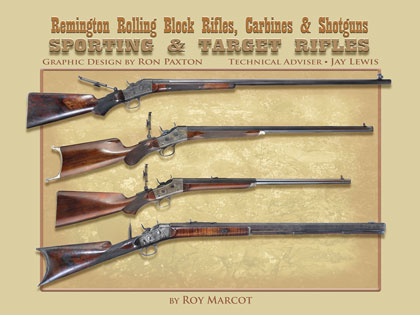 North Cape Publications proudly presents -
North Cape Publications proudly presents -
REMINGTON ROLLING BLOCK RIFLES, CARBINES & SHOTGUNS - SPORTING & TARGET RIFLES
By Roy Marcot
Roy Marcot’s long-awaited book on one of America’s most famous hunting and sporting rifles is now available.
This new 330-page hardbound book is printed in full color. Individual chapters describe in detail the Remington No.1, No.1½, No.2, No.4, No.5 and
No.7 rolling block firearms. The No.1 expanded section includes full chapters on the development of the rolling block system, early sporting rifles, engraved and embellished rifles, Creedmoor Long Range rifles, Mid-Range and Short Range rifles, Schuetzen rifles, Bench rest rifles, and Buffalo rifles.
Every model is described in great detail, with over 250 comprehensive color photographs of all important aspects. Besides the quality of the photography, what sets this book apart is the 12 x 10 inch layout of the photographs and text in a flowing matrix designed by well-known graphic artist, Ron Paxton. Noted antique arms authority, Norm Flayderman, in writing the Foreword to this book, said, "the quality of the photography in this new book sets a new standard that all future arms books will be held to."
Research on this epic study of one of America’s most famous hunting and sporting rifle began twenty-three years ago. Countless trips were made by the author to museums and private gun collections throughout the United States and Great Britain. Mr. Marcot also spent hundreds of hours over the past eighteen years combing through the Remington company archives drawing material from original surviving production, sales and shipping records.
The Remington Rolling Block Rifles, Carbines & Shotguns - Sporting & Target Rifles in the standard hardbound edition retails for $100ºº, plus Priority Mail, and each book is personally autographed by the author, Roy Marcot; by the technical adviser, Jay Lewis; and by the graphic artist, Ron Paxton. A special, deluxe, leather-bound book with full leather slip-case, page ribbon and gilt-edged pages, also autographed, is available for $165ºº , plus $11.95 Priority Mail. The ISBN number for the standard edition is
978-0-9611494-0-6 and for the deluxe edition, 978-0-9611494-5-1.
North Cape Publications, Inc. has been granted full distribution rights for the book.
REMINGTON ROLLING BLOCK RIFLES, CARBINES & SHOTGUNS -
SPORTING & TARGET RIFLES
Standard Edition $85.95 ea.
Deluxe Edition $125.00 ea. Order by email to ncape@ix.netcom.com or by calling 800 745-9714.
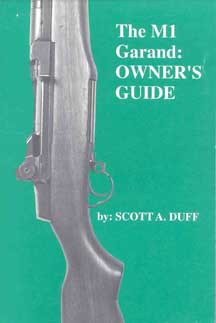
by Scott Duff.
New owners of M1 Garands often have many questions about the care and feeding of their rifles. Scott Duff has set out to answer these in a new book that provides detailed instructions on assembly/disassembly, maintenance, trouble shooting, zeroing the sights and shooting of this famous World War II battle rifle.
The M1 Garand Owners Guide $24.95
Order by email to ncape@ix.netcom.com or by calling 800 745-9714.
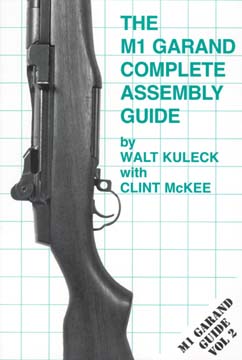
by Walt Kuleck with Clint McKee.
ISBN # is 1-888722-13-4
Have you ever thought about turning that mismatched or imported beat-up old M1 Garand into a tack-driving, accurized rifle, or even assembling a complete M1 Garand from parts? Receivers, barrels and plenty of G.I. parts are still around and at reasonable prices.
Applying the same system of techniques that worked so well in The AR15 Complete Assembly Guide, this new book provides all the information you need to know on how to select parts - and where to find them - how to inspect each part, how to fit the bolt to the receiver using hand tools, how to fit a barrel to the receiver if you are somewhat handy with
tools - or how to have it done professionally to obtain the proper head space with a "stright up" barrel.
Even if you don't plan to build an M1 Garand from scratch, this book contains more than enough information to enable you to resolve virtually every problem you might encounter with an M1 Garand.
In addition, the book presents a valuable guide to the proper assembly/disassembly procedure and maintenance and inspection. This is a book that should be in the library of every M1 Garand collector and shooter.
The M1 Garand Complete Assembly Guide by Walt Kuleck with Clint McKee $24.95 Order by email to ncape@ix.netcom.com or by calling 800 745-9714.
by Scott Duff.
Does for the M1 Carbine what the "M1 Garand: Owner's Guide" does for the M1 Garand. There are thousands of M1 Carbines available on the market, so how do you go about selecting one that is shootable as well as collectible? This book also provides a complete description of the assembly/disassembly process, maintenance, trouble shooting, sight zeroing and shooting as well as a list of qualified gunsmiths and sources for parts and accessories.
The M1 Carbine Owner's Guide (Duff) $22.95 Order by email to ncape@ix.netcom.com or by calling 800 745-9714.
by C.S. Ferris
This new edition of Nick Ferris' popular book on the Rock Island manufactured has been revised and expanded with additional, recently uncovered information about both the rod bayonet and .30-06 models. Numerous new photos, illustrations and charts have also been added. The book discusses in detail the original production of the rod bayonet rifles and their subsequent alteration to .30-03 and then .30-06 caliber. The Rock Island rifles were manufactured into 1913 by which time enough rifles had been produced the two national armories to equip the entire peacetime military establishment. Production resumed again in 1917 on America's entry into World War II and closed again in 1919 although parts continued to be made into 1922. The Rock Island Arsenal also had a long history as an arms depot dating from the period of the Blackhawk War in 1831-1832. Established as a government arsenal in 1862, it continues in operation to this day.
The Rock Island Rifle, Model 1903" makes a wonderful supplement to our own Model 1903 Springfield Rifle and its Variations by Joe Poyer. (Click here for details button with link to the Model 1903 Springfield Rifle and its Variations"
Rock Island Rifle Model '03 $22.95 ea.
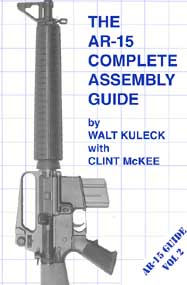 The AR-15 Complete Assembly Guide, Volume 2
The AR-15 Complete Assembly Guide, Volume 2
by Walt Kuleck and Clint McKee
Want to build your own AR15 Rifle. Between our "The M16/AR15 Rifle, A Shooter's and Collector's Guide" and this book, you will have all the information you need to select the parts from receiver to barrel to stock and furniture to assemble your own AR15 rifle in any configuration from A2 to A4 to Match Rifle to Space Gun. In our book, the West Coast technique is presented with Jim Gronning's (Gruning Precision) step-by-step selection and assembly procedures. In The AR-15 Complete Assembly Guide, Volume 2, you get the east coast view and techniques through the eyes of Clint McKee, master gunsmith and owner of the Fulton Armory.
Kuleck and McKee not only tell you how to select the parts and assemble them properly, they point out any pitfalls you might encounter and tell you how to overcome them. They then tell you how to test each component and the finished product.
If you are an M16/AR15 afficionado, then this is the book you need.
AR-15 Complete Assembly Guide, Volume 2 $24.95 Order by email to ncape@ix.netcom.com or by calling 800 745-9714.
 The AR-15 Complete Assembly Guide, Volume 2
The AR-15 Complete Assembly Guide, Volume 2
by Walt Kuleck and Clint McKee
Want to build your own AR15 Rifle. Between our "The M16/AR15 Rifle, A Shooter's and Collector's Guide" and this book, you will have all the information you need to select the parts from receiver to barrel to stock and furniture to assemble your own AR15 rifle in any configuration from A2 to A4 to Match Rifle to Space Gun. In our book, the West Coast technique is presented with Jim Gronning's (Gruning Precision) step-by-step selection and assembly procedures. In The AR-15 Complete Assembly Guide, Volume 2, you get the east coast view and techniques through the eyes of Clint McKee, master gunsmith and owner of the Fulton Armory.
Kuleck and McKee not only tell you how to select the parts and assemble them properly, they point out any pitfalls you might encounter and tell you how to overcome them. They then tell you how to test each component and the finished product.
If you are an M16/AR15 afficionado, then this is the book you need.
AR-15 Complete Assembly Guide, Volume 2 $24.95 Order by email to ncape@ix.netcom.com or by calling 800 745-9714.
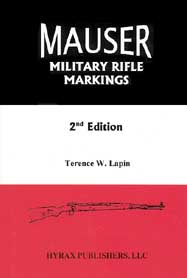 Mauser Military Markings, 2nd Edition
Mauser Military Markings, 2nd Edition
by Terrence W. Lapin.
This book contains the most complete listing of military markings to be found on any of the dozens of models of Mauser bolt action rifles used by any country in the world, from Argentina to Yugoslavia. The markings are categorized by type, nation, language, numerically and alphabetically. Categories include coats of arms, emblems, German Wartime and Police District codes. All inscriptions, numbers and tests are translated from both Western and non-Western languages. Terrence Lapin is the author of the very fine The Mosin-Nagant Rifles and The Soviet Mosin-Nagant Manual. Fully illustrated @ $22.95
Mauser Military Markings $22.95 Order by email to ncape@ix.netcom.com or by calling 800 745-9714.
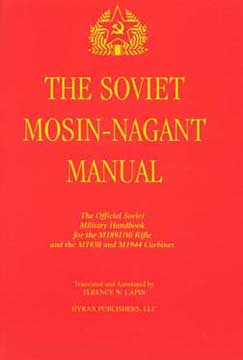 The Soviet Mosin-Nagant Manual
The Soviet Mosin-Nagant Manual
translated and annotated by Terence W. Lapin.
Terry Lapin, the author of "The Mosin-Nagant Rifle," published by North Cape Publications, Inc., has completed a new translation of the Soviet Soldier's Handbook, published in 1955, "Manual of Arms; The 1891/30 Rifle and the M1938 and the M1944 Carbines." This was the book issued to all Soviet soldiers with their M1891/30, M1938 or M1944 Mosin-Nagant Rifles. For those of you who shoot the Mosin- Nagant, this is a must have book. It not only covers the care and maintenance of the Mosin-Nagant, but tells you how to shoot it, how to adjust the sights, how to shoot at various targets, moving and still, and provides all the technical data on the rifle and two carbines.
Mr. Lapin has not only translated this Soviet manual but has annotated it to explain terms, phrases and practices that will not be familiar to a non-Russian audience.
The Soviet Mosin-Nagant Manual $15.95 Order by email to ncape@ix.netcom.com or by calling 800 745-9714.
 Mannlicher Model 95 Rifle and Carbine: The Royal Italian Infantry Manual
Mannlicher Model 95 Rifle and Carbine: The Royal Italian Infantry Manual
translated by Terence W. Lapin.
Not a week goes by that we do not get a request for information on the Italian rifles. How do you take them apart? How do you shoot them? How do you disassemble the bolt? What kind of ammunition do they use? What kind of bayonet is correct? How do I use that rear sight? Terry Lapin, the author of "The Mosin-Nagant Rifle" and "Mauser Military Markings" and the translator of "The Soviet Mosin-Nagant Military Manual" has provided a translation of the Italian Army's own manual for the Mannlicher M95 (much of this information will also apply to the Carcano series). This is the same manual issued to Italian soldiers, but it was also used by officers and non-commissioned officers to train their men in the use of the rifle. An excellent reference work that will answer a lot of questions.
Mannlicher Model 95 Rifle and Carbine: The Royal Italian Infantry Manual $9.95 Order by email to ncape@ix.netcom.com or by calling 800 745-9714.


| Go to Previous Site | Go to Index | Go to Random Site | E-Mail the Ringmaster | Go to Next Site |